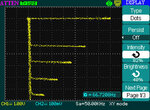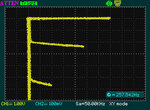mr_monster
Member level 4
I have recently bought a simple curve tracer made by Leader. It is connected to the scope to use as a monitor. One of the transistors shows normal curves (7), the other one is skipping a few curves (shows 3). What does that mean?
Attachments
Last edited:


